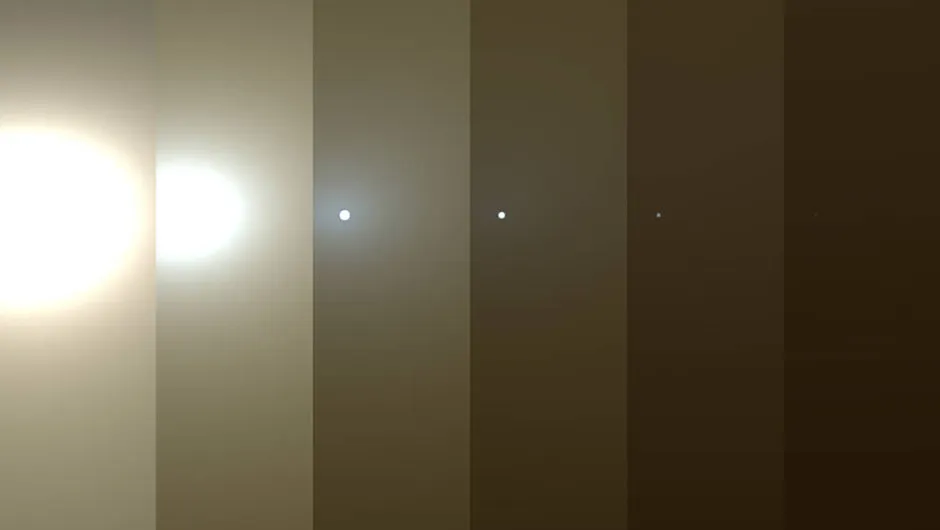This global map of Mars shows a growing dust storm as of June 6, 2018. The map was produced by the Mars Color Imager (MARCI) camera on NASA's Mars Reconnaissance Orbiter spacecraft. The blue dot indicates the approximate location of Opportunity. Image Credit: NASA/JPL-Caltech/MSSS
A mega-storm is brewing on Mars.
For the last week and a half, since 31 May 2018, one of the thickest dust storms ever seen has been spreading across the planet and now covers a quarter of its surface.
The storm is so severe that the Opportunity rover has had to suspend its science operations as it isn’t getting enough light to its solar panels to operate fully.
But for the three NASA Mars orbiters operating around the planet, this is a long-awaited opportunity to study these massive storms.
“This is the ideal storm for Mars science,” says Jim Watzin, director of NASA’s Mars Exploration Program. “We have a historic number of spacecraft operating at the Red Planet.
Each offers a unique look at how dust storm form and behave – knowledge that will be essential for future robotic and human missions.”
Dust storms are a common occurrence on Mars.

They are usually small and localised, but occasionally they can envelop the entire planet for weeks at a time.
The planet-scale storms occur about once every three to four Mars years (six to eight Earth years), and NASA has been waiting for the chance to study one ever since the last storm in 2007.
“Each observation of these large storms brings us closer to being able to model these events – and maybe, someday, being able to forecast them,” says Rich Zurek, chief scientist from the Mars Program Office.
“That would be like forecasting El Niño events on Earth, or the severity of upcoming hurricane seasons.”
The current storm is currently 35 million square kilometres in size and completely surrounds Opportunity’s current location.
Fortunately, the atmosphere is so thin on Mars the dust will do little harm to the rover – despite what you may have seen in the film ‘The Martian’, the most damage the dust can do is blot out Opportunity’s solar panels.
The other Mars Rover, Curiosity, is currently operating normally on the other side of the planet to the storm though it has begun to detect an increase in dust levels.
Even if the storm does reach Curiosity however, the rover will not have the same problems as Opportunity as it uses a nuclear-powered battery.
It will be another few days before we know if this storm will go global or not, but NASA will continue to observe the storm with all the tools still at its disposal to see how it evolves.

